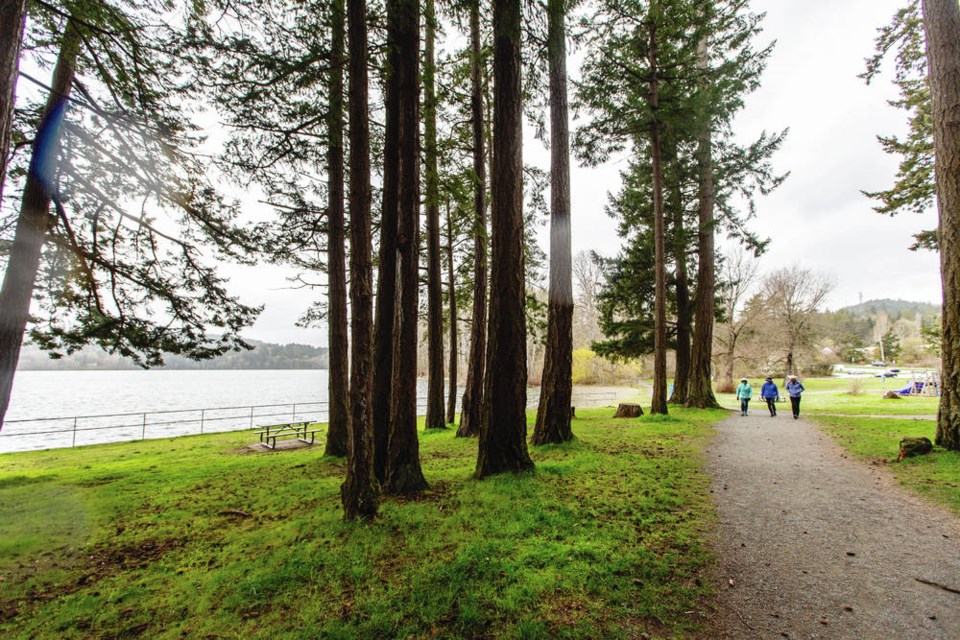A $1.4-million system to pump oxygen into Elk Lake is expected to be running by spring of next year as a key element in a campaign to tackle decades-long water-quality problems.
The Capital Regional District board has posted a request for qualified consultants with the goal of finding a firm to design and help implement the planned system. It would include mixing layers of water in Beaver Lake to help improve its quality.
The posting follows a unanimous vote by the board in 2019 in favour of proceeding with a remediation plan aimed at reducing the number of blue-green algae blooms, improving fish habitat, and managing invasive Eurasian milfoil.
Victoria Coun. Ben Isitt said then, “I think source control really is going to be the ultimate solution. So I hope we don’t just buy a fancy fountain without dealing with the contaminants that are causing the health of the lake to deteriorate.”
The in-lake systems are expected to have a capital cost of $1.4 million, with ongoing operational costs of $100,000 to $150,000 per year.
The CRD is hoping for matching federal and provincial funds.
Contaminants flow into the lake over lands within the CRD and from the nearby provincial highway, Isitt said, adding that a diverted stream could be carrying agricultural contaminants into the water.
The CRD is seeking experienced firms to indicate interest in the job. The request closes April 20.
A shortlist will be drawn up and those firms will be asked to submit detailed plans to design and administer construction of the oxygenation system in Elk Lake and water-mixing in Beaver Lake.
The successful firm will review the remediation plan to determine if the recommendations are the best way to proceed.
They would design a system based on a technology called Speece cone to deliver oxygen into the lake.
The overall remediation effort for Elk and Beaver lakes includes a watershed management plan, unveiled in 2020, with recommendations on ways to reduce nutrients entering the water. Its long-term initiatives would strive to improve rural and urban land management practices with landowners, including farmers.
The popular regional park pulled in 1.7 million visitors of all ages last year to enjoy a wide range of activities including swimming, canoeing, rowing, fishing, and hiking the trails surrounding the lakes.
Activities are curtailed at times because of the profusion of Eurasian milfoil and more frequent and longer-lasting blue-green algae blooms.
Blooms contain cyanotoxins, which can lead to headaches and abdominal pain in people and can cause deadly liver damage in dogs.
The proposed system would deliver 1,150 kilograms of oxygen per day into the bottom level of Elk Lake, CRD says.
These efforts are expected to result in better water quality, in turn cutting down on the number of algae blooms. The remediation plan is aimed at supporting habitat for the endangered western painted turtle.
The lakes are also the headwaters for Colquitz River, which supports cutthroat trout and coho salmon.
Oxygenation systems are often used to improve the condition of lakes. Langford Lake, for example, has had such a system for many years.
The water improvement program comes as the CRD is planning to spend $200,000 to convert its existing Elk Lake playground into a nature-style play space at Hamsterly Beach this fall.



